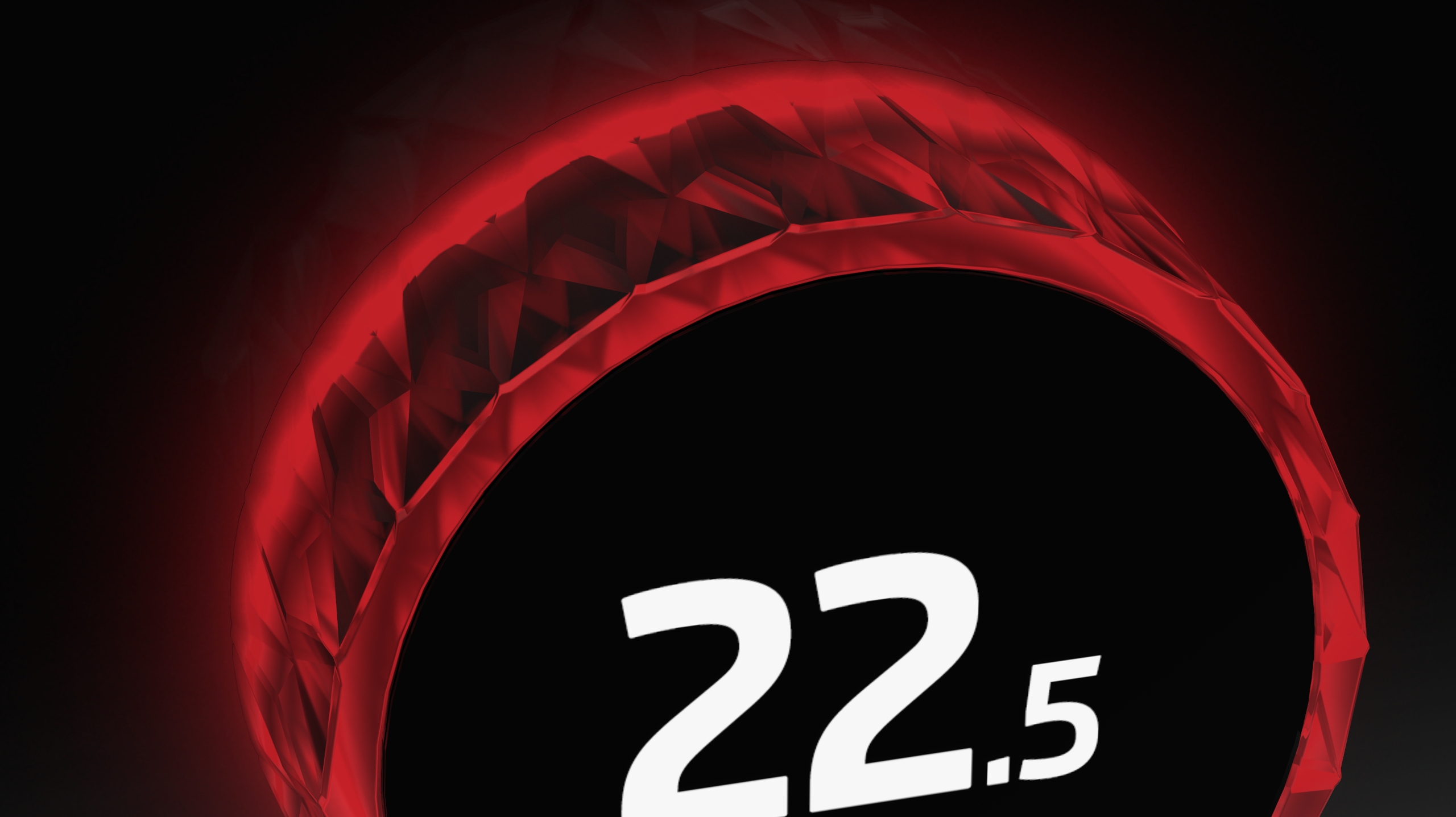
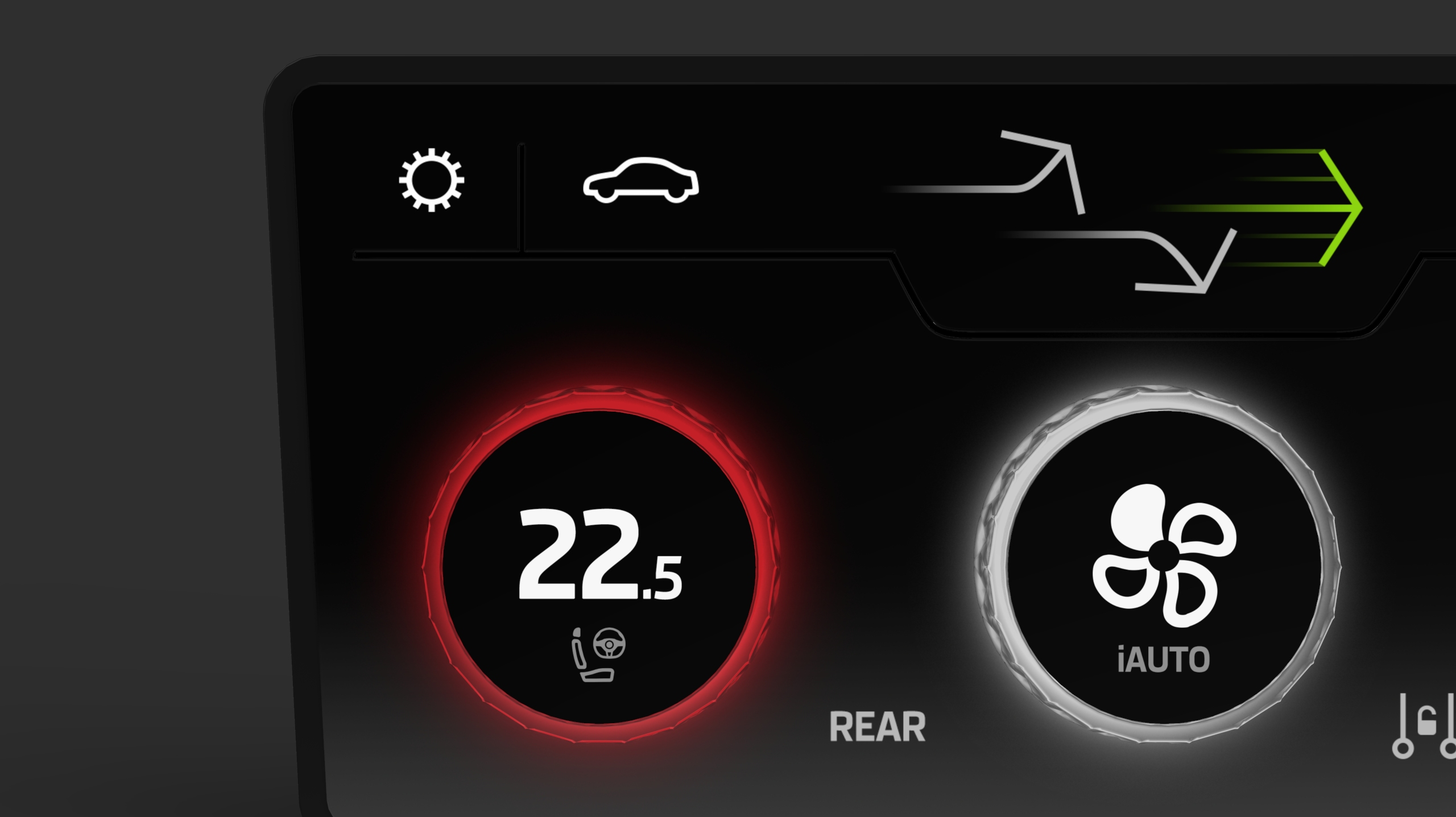
Unfortunately, this browser or resolution is not supported.
Please use Google Chrome, Apple Safari or a bigger device (e.g. iPad in landscape mode).
The project includes concepts of redesigned graphical user interface and hardware interface Climatronic Touch, both with new functions. These were the main goals:


The project started with a market analysis. The data were collected from interviews with Škoda Auto customers and sellers. Analysis among competitor car manufacturers took place in the car showrooms and was based on executing certain procedures – setting the direction of the air outlet, the temperature, and adjusting the fan speed. The results suggested that hardware rotary buttons should be preserved, and revealed that some functions may be less understandable (e.g. SYNC, seat heating/ventilation, AirCare). The results indicate that people would appreciate more personalized – intelligent systems.
The data were concurrently collected online. The project is influenced by trends showed on CES in Las Vegas or Geneva International Motor Show, also by Volkswagen Innovision, Volvo Android P, Apple CarPlay or by MBUX system. Last but not least the concepts are inspired by Škoda Vision E and Škoda marketing. The results of external studies on how human bodies perceive temperature were also taken into account.
In the designing process three concepts were created — the new graphical UI, hardware interface Climatronic Touch with rotary buttons and Climatronic 3D Display with semi virtual sliders (shown below). However, the rotary buttons turned out to be more convenient than the semi virtual sliders, therefore the focus was placed only in Climatronic Touch and new graphical UI. Each version of the concept was discussed with its potential users. The whole project lasted for 4 weeks.
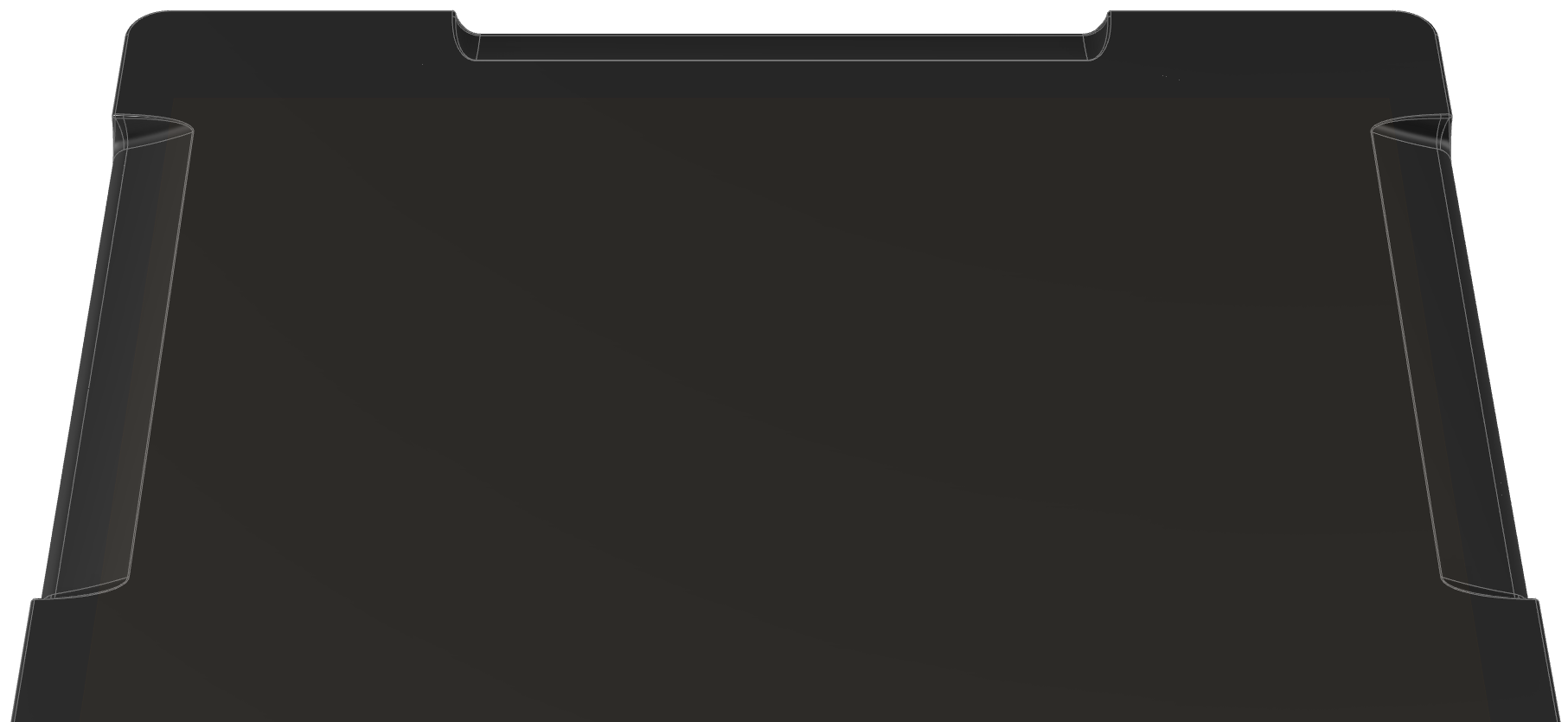
Designed to minimize steps needed to operate any function without additional hardware. Basic layout of the original system is extended. Favourite settings for seats and steering wheel can be now easily saved with long press. Sliders help the user reach their demands quickly. Self-learning iAUTO mode can now predict user’s habits or reduce the risk of temperature shocks.
Imagine that you like to have heated seats and steering wheel when you drive in the mornings. Because iAUTO knows your preferences it can invoke the settings automatically after the engine starts. Just press iAUTO ► button placed below the prototype (simulation will be shown in the interactive prototype).
Sliders are used for the temperature settings and the fan speed because of their great suitability for digital displays. Clickable buttons works well, however only for maximum 3-4 steps. Rotary buttons are not suitable for displays but they are great for hardware interfaces and therefore can be found in Climatronic Touch concept.
To reduce the cognitive distraction from the driving every element has haptic feedback using vibrations.
Moreover, the air condition interface can be opened anywhere in the system by swiping two fingers from the bottom to the top of the screen.
Improved layout provides quick access to the most frequent apps. For instance, the clocks invoke screensaver (or MENU) and the temperature indicator opens the weather app.
To make things easier, the settings button is placed in the left bottom corner in every app.
New automatic functions can help drivers spend less time on switching buttons. The new function "Sync temperature" recognizes when the driver is the only person in the car and if so, it enables SYNC automatically.
Climatronic Touch enables to operate every function from one place. Wide touch display is equipped with three rotary buttons with additional touch displays. The buttons provides haptic feedback through vibrations and mechanical resistance.
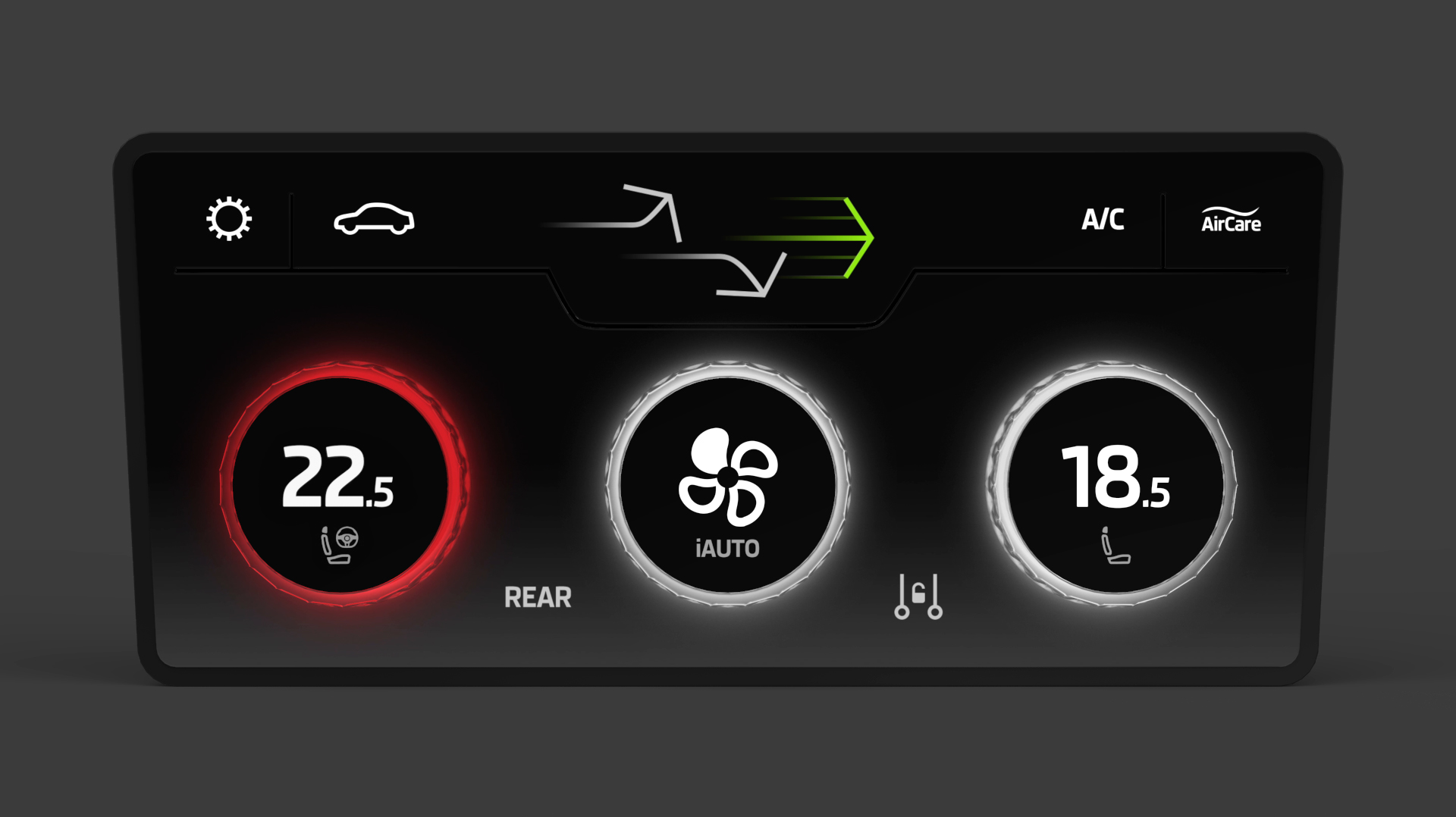
Layout of the buttons is redesigned to create logical segments which are divided into three sections:
personal comfort
cabin comfort
vehicle settings
The same principles are used in the new GUI.
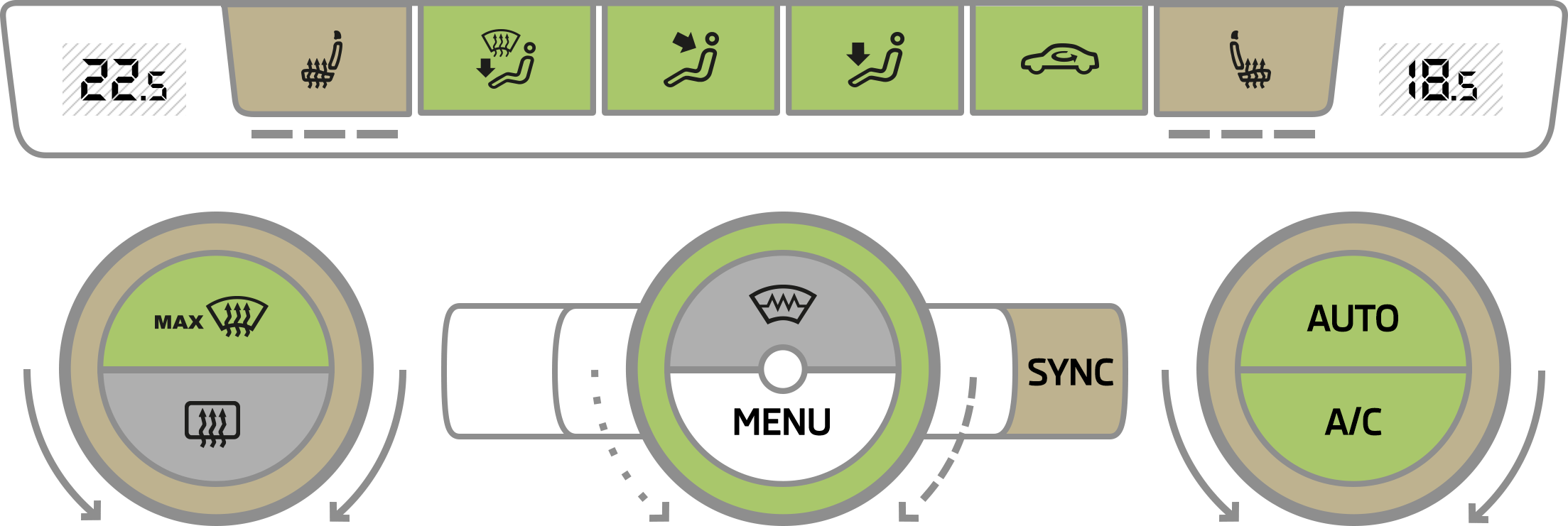
Climatronic, Škoda Superb 2017
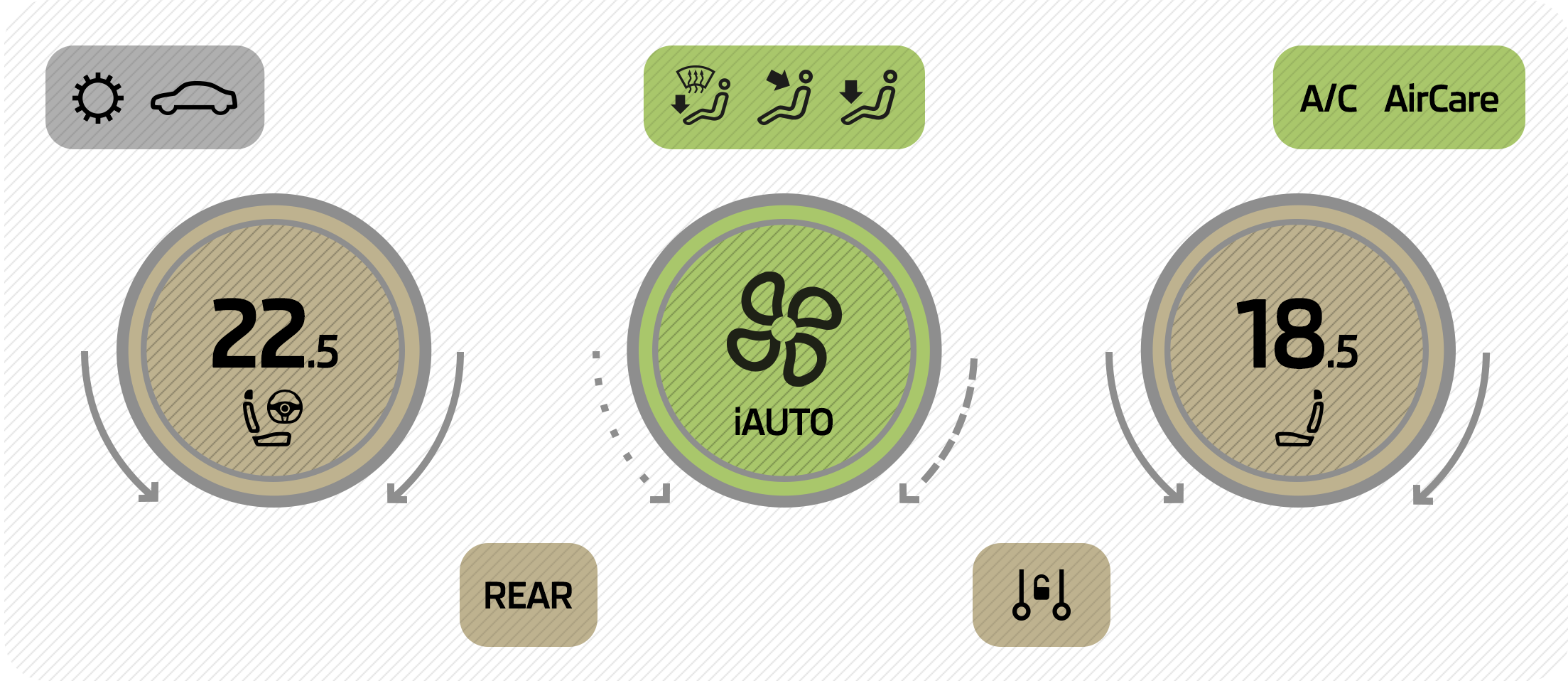
Climatronic Touch
Rotary buttons are multifunctional — the temperature, the seat heating and the steering wheel heating can be now easily set just by buttons.
The direction of the air outlet can be set with a touch gesture.
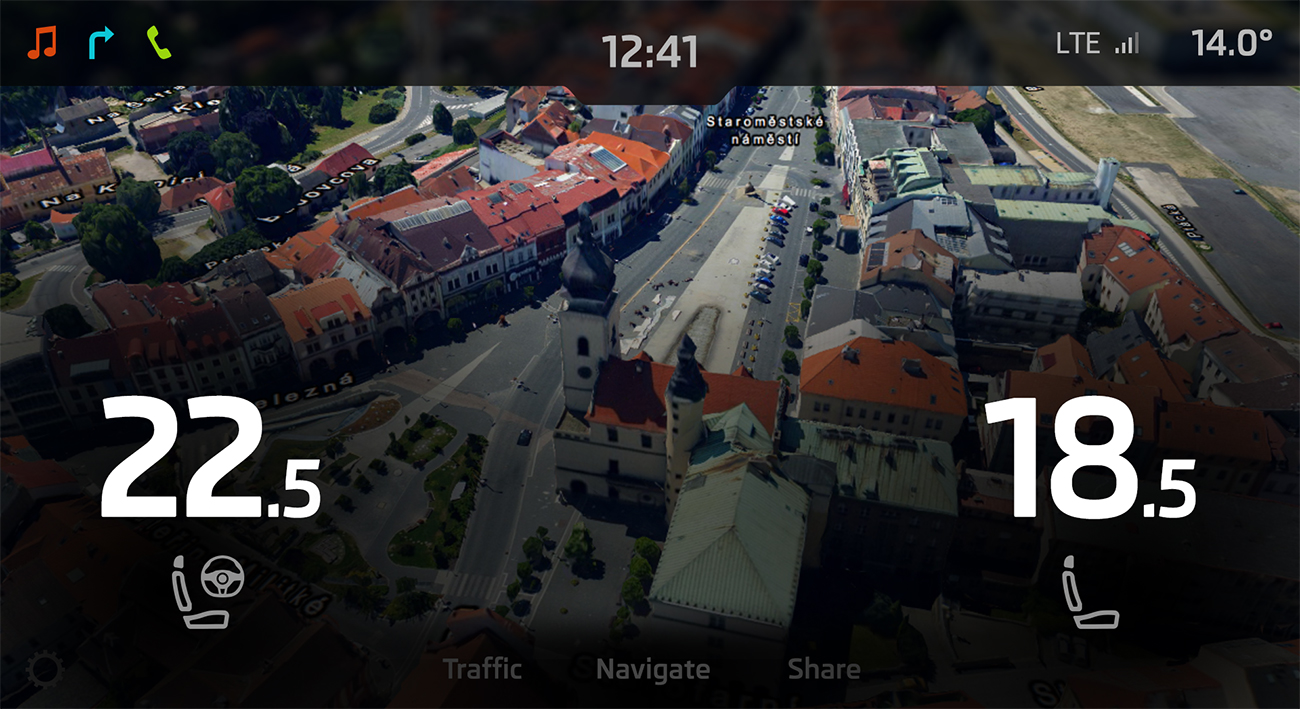
Any changed value is displayed on the infotainment screen to decrease driver's cognitive distractions.
Climatronic Touch provides vibration feedback and the wheels extra mechanical resistance above that. Passive feedback is provided by the grooves in the panel.
The panel brightness level is adjusted automatically depending on the light enviroment. The proximity sensor dims the screen brightness level when the system is not used.

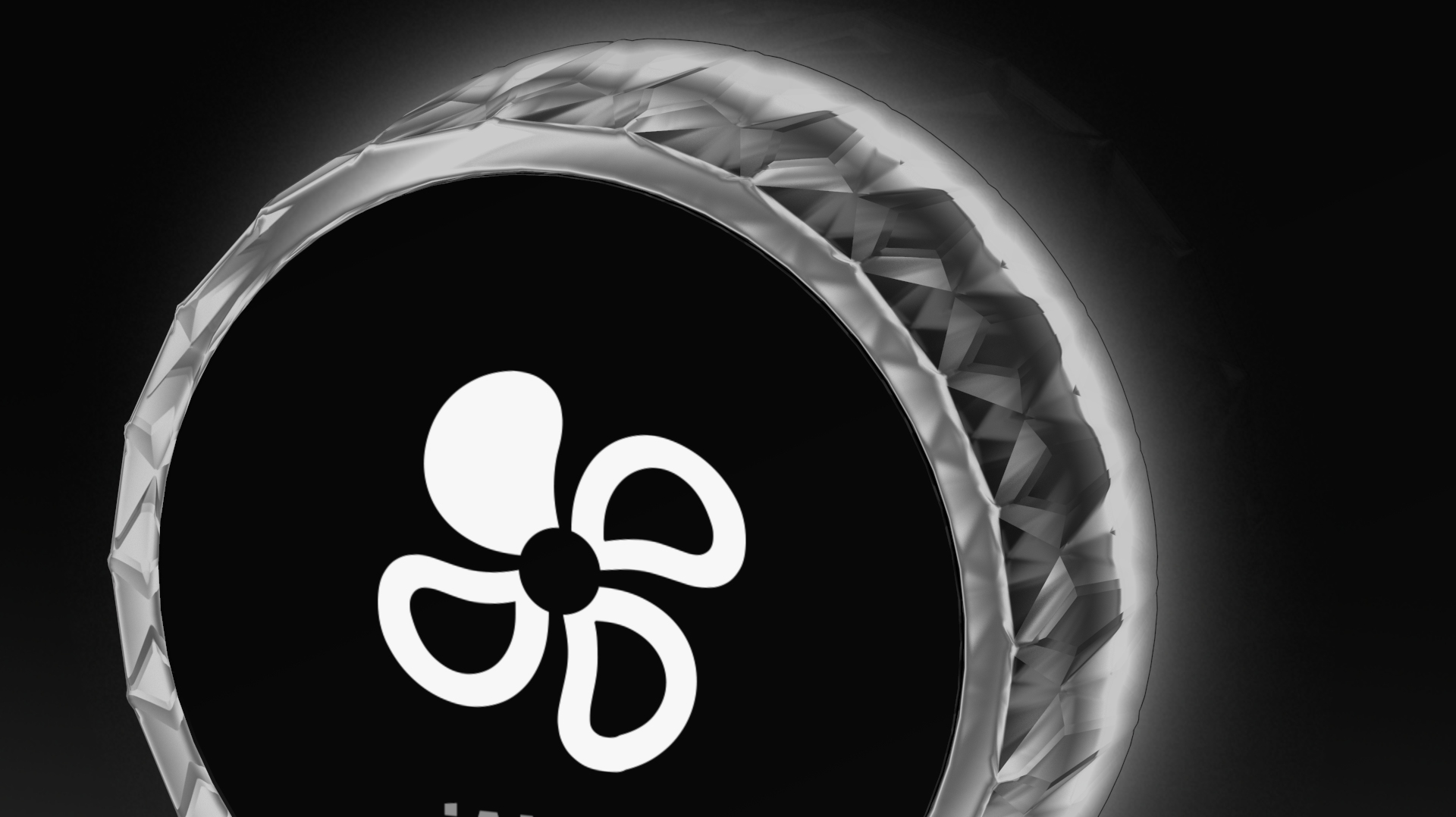
Hello, my name is Filip Rojík and I am 25 year-old open-minded person. I studied photography at high school and then continued at Film Academy in Prague as a film editor. Beside that I have been greatly involved in UX and UI designing as a freelancer. All this knowledge helps me interact with people through the most used forms of media. Making thing easily understandable to everyone is the idea that unifies all my work.

raster graphics

vector graphics
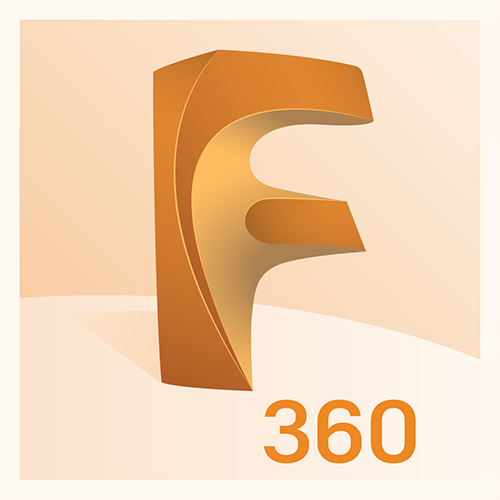
3D modelling

3D rendering

system structures

analyze

web developing